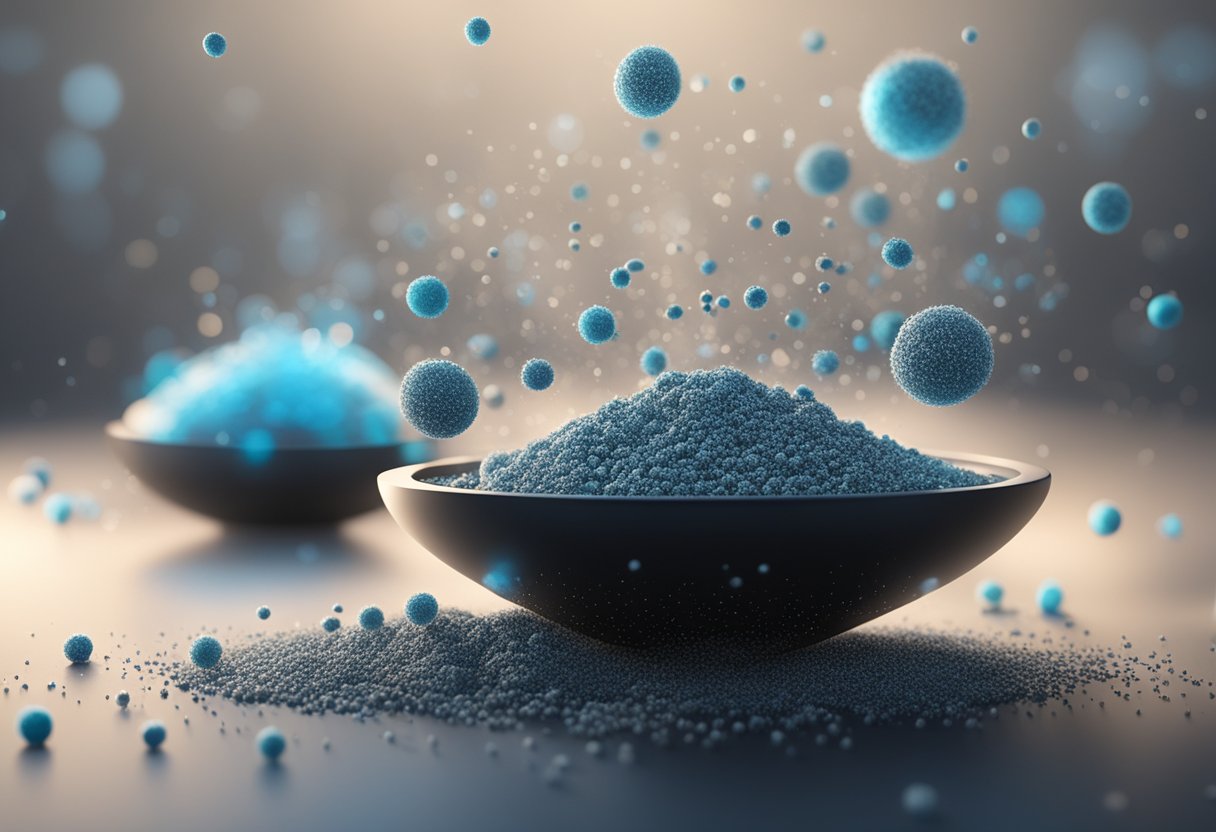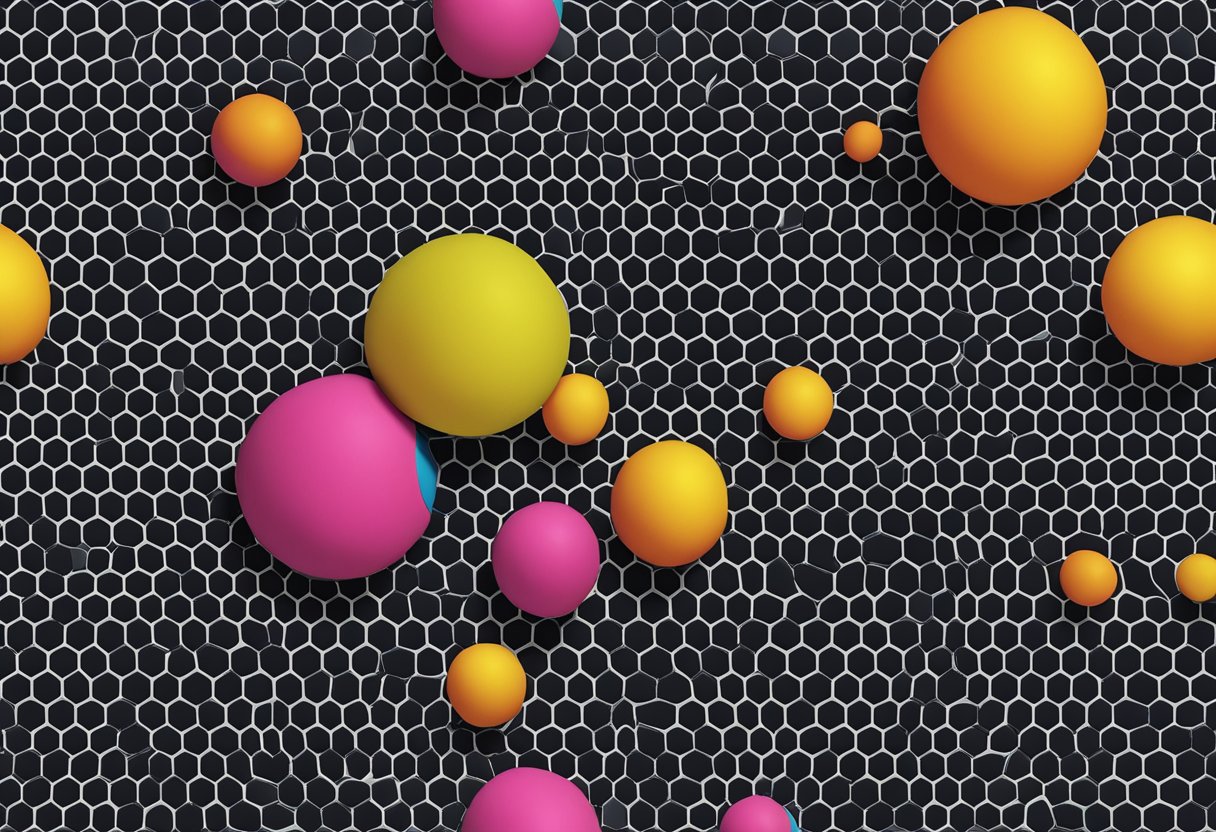Carbon Black N 330: Properties, Applications, and Market Trends
19/01/2024
Carbon black N 330 is a type of carbon black that is widely used in various industries, including rubber, plastic, and ink. It is a highly pure form of carbon that is produced by the incomplete combustion of hydrocarbons. Carbon black N330 is known for its excellent physical and chemical properties, which make it an ideal material for many applications.

One of the main properties of carbon black N330 is its high surface area, which provides excellent reinforcement to rubber and other materials. This property enables it to improve the mechanical properties of rubber, such as its tensile strength and abrasion resistance. Carbon black N330 is also known for its excellent electrical conductivity, which makes it an ideal material for use in electronic components and conductive coatings.
Carbon black N330 is produced by various methods, including thermal decomposition, acetylene black method, and oil furnace method. The choice of method depends on the specific application and the desired properties of the carbon black. In the rubber industry, carbon black N330 is used in the production of tires, conveyor belts, and other rubber products. In the plastic industry, it is used as a pigment and filler in various plastic products. In the ink industry, it is used as a black pigment in printing inks.
Chemical Properties of Carbon Black N 330

Carbon black N 330 is a type of carbon black that is widely used in various industries due to its unique chemical properties. Here are some of the key chemical properties of carbon black N 330:
- Chemical formula: C
- Molecular weight: 12.01 g/mol
- Appearance: Fine black powder with a particle size of 20-30 nm
- Density: 1.8 g/cm³
- Melting point: > 3500 °C
- Boiling point: > 5000 °C
Carbon black N 330 is a highly stable and non-reactive substance that is resistant to oxidation and degradation. It is insoluble in water and most organic solvents, but can be dispersed in oils and other hydrophobic media.
One of the most important properties of carbon black N 330 is its high surface area, which ranges from 70 to 140 m²/g. This makes it an excellent adsorbent for various gases and liquids, including nitrogen, oxygen, carbon dioxide, and water vapor. It is also used as a filler and reinforcing agent in rubber, plastics, and other composite materials due to its high strength, stiffness, and abrasion resistance.
In addition, carbon black N 330 is a good conductor of electricity and heat, making it suitable for use in electronic and thermal applications. It is also used as a pigment in inks, coatings, and other colorants due to its high tinting strength and opacity.
Overall, carbon black N 330 is a versatile and valuable material that offers a wide range of chemical and physical properties for various industrial applications.
Production Process of Carbon Black N 330

Furnace Black Method
The furnace black method is a commonly used process for producing carbon black N 330. In this method, a hydrocarbon feedstock, such as natural gas or coal tar, is burned in a furnace with a controlled amount of air. The resulting flame generates a high-temperature gas stream, which is then cooled and quenched with water. The carbon black particles are formed in the flame and are carried by the gas stream to the quenching chamber.
The carbon black N 330 produced by the furnace black method has a high structure and surface area, making it suitable for use in a wide range of applications, including tires, rubber products, and plastics.
Thermal Black Process
The thermal black process is another method for producing carbon black N 330. In this process, a hydrocarbon feedstock is heated in a reactor vessel to a high temperature, typically between 1200 and 1600°C, in the absence of air. The resulting carbon black particles are then cooled and collected.
The carbon black N 330 produced by the thermal black process has a lower structure and surface area than that produced by the furnace black method. However, it has a higher purity and is therefore often used in applications where purity is critical, such as inks, coatings, and toners.
Overall, the production process of carbon black N 330 involves the controlled combustion or heating of a hydrocarbon feedstock to produce carbon black particles with specific properties. The choice of production method depends on the desired properties of the final product and the specific application for which it will be used.
Applications of Carbon Black N 330

Rubber Reinforcement
Carbon Black N 330 is widely used in the rubber industry as a reinforcing filler due to its high surface area and excellent reinforcing properties. It is commonly added to rubber compounds to improve their strength, durability, and resistance to wear and tear. The addition of carbon black also enhances the electrical conductivity of rubber products.
Pigmentation
Carbon Black N 330 is also used as a pigment in a variety of applications, including plastics, coatings, inks, and paints. It provides a deep black color and excellent tinting strength, making it a popular choice for coloring products. Carbon black is often preferred over other pigments due to its superior lightfastness and resistance to fading.
UV Protection
Carbon Black N 330 is known for its ability to absorb ultraviolet (UV) radiation, making it an effective additive for products that require protection from UV radiation. It is commonly used in the production of plastics, coatings, and rubber products that are exposed to sunlight. The addition of carbon black helps to prevent the degradation of these materials caused by UV radiation.
Overall, Carbon Black N 330 is a versatile material with a wide range of applications. Its unique properties make it an essential component in many industrial products and processes.
Market Overview for Carbon Black N 330
Carbon black N 330 is a type of reinforcing filler used in rubber and plastic applications. It is produced by the partial combustion of hydrocarbons, resulting in a fine black powder with high surface area and low tinting strength.
The global market for carbon black N 330 is expected to grow at a steady pace, driven by the increasing demand for rubber products in the automotive and construction industries. The Asia-Pacific region is the largest market for carbon black N 330, accounting for more than half of the global demand.
The major players in the carbon black N 330 market include Cabot Corporation, Orion Engineered Carbons, Birla Carbon, and Phillips Carbon Black Limited. These companies are investing heavily in research and development to improve the performance and quality of carbon black N 330, as well as expand their production capacity to meet the growing demand.
The market for carbon black N 330 is highly competitive, with a large number of small and medium-sized players operating in the market. However, the market is also highly consolidated, with the top five players accounting for a significant share of the global market.
Overall, the market for carbon black N 330 is expected to continue to grow in the coming years, driven by the increasing demand for rubber products in various industries. However, the market is also facing challenges such as regulatory restrictions and environmental concerns related to the production of carbon black.
Physical Characteristics of Carbon Black N 330
Particle Size
Carbon black N 330 is a fine powder with an average particle size of 30-40 nm. The particle size distribution is narrow, with most particles falling within the 20-50 nm range. The small particle size contributes to the black pigment’s high tinting strength and opacity.
Structure
Carbon black N 330 has a unique structure consisting of small, fused particles. The particles are composed of graphitic carbon and have a high degree of crystallinity. The structure of carbon black N 330 is responsible for its excellent reinforcing properties in rubber compounds.
Surface Area
Carbon black N 330 has a high surface area of approximately 75-85 m²/g. The high surface area contributes to the pigment’s ability to absorb and scatter light, resulting in its deep black color. The high surface area also contributes to the pigment’s high reinforcing properties in rubber compounds.
Overall, carbon black N 330 is a fine powder with a narrow particle size distribution, a unique structure consisting of small, fused particles, and a high surface area. These physical characteristics contribute to the pigment’s excellent tinting strength, opacity, and reinforcing properties in rubber compounds.
Safety and Handling Guidelines for Carbon Black N 330
Carbon Black N 330 is a fine black powder commonly used in the rubber industry. It is important to follow safety and handling guidelines to prevent exposure and potential health hazards.
Handling
When handling Carbon Black N 330, it is important to wear appropriate personal protective equipment (PPE), including gloves, goggles, and a respirator. The powder should be handled in a well-ventilated area to prevent inhalation.
Storage
Carbon Black N 330 should be stored in a cool, dry, and well-ventilated area. It should be kept away from sources of ignition, such as open flames or sparks. The powder should be stored in a tightly sealed container to prevent moisture absorption.
Spills and Cleanup
In the event of a spill, it is important to clean up the powder immediately to prevent further spread. The area should be ventilated and the powder should be swept up using a dustpan and brush. The powder should not be vacuumed, as this can cause the powder to become airborne. The spilled powder should be disposed of in accordance with local regulations.
Health Hazards
Carbon Black N 330 can cause respiratory and skin irritation if inhaled or in contact with the skin. Prolonged exposure can lead to lung damage and other health issues. It is important to follow safety guidelines and minimize exposure to the powder.
By following these safety and handling guidelines, the risk of exposure and potential health hazards can be minimized. It is important to always handle Carbon Black N 330 with care and respect to ensure a safe working environment.
Environmental Impact of Carbon Black N 330
Carbon Black N 330 is a widely used industrial material that has been known to have an impact on the environment. Its production process involves the incomplete combustion of hydrocarbons, which releases large amounts of greenhouse gases such as carbon dioxide and carbon monoxide into the atmosphere.
The release of these gases contributes to global warming and climate change, which have far-reaching consequences for the environment and human health. In addition, the production of Carbon Black N330 also generates large amounts of waste and byproducts, which can have negative impacts on soil and water quality.
Despite these environmental concerns, Carbon Black N330 has many useful applications in various industries, such as rubber manufacturing, plastics, and paints. As a result, efforts have been made to reduce its environmental impact through the development of more sustainable production methods and the implementation of waste management strategies.
Overall, while Carbon Black N330 does have a significant environmental impact, its usefulness in industry means that it will likely continue to be produced and used. It is important for companies and governments to take steps to mitigate its impact and promote more sustainable practices in order to minimize its negative effects on the environment.
Quality Control and Standards for Carbon Black N 330
Carbon Black N330 is a high-quality carbon black that is widely used in various industrial applications. To ensure that the product meets the required quality standards, strict quality control measures are implemented throughout the production process.
One of the key quality control measures is the monitoring of the particle size distribution of the carbon black. This is done using specialized equipment that measures the size of the carbon black particles and ensures that they fall within the required range. The particle size distribution is critical to the performance of the carbon black in various applications.
Another important quality control measure is the testing of the carbon black for impurities. Impurities can affect the quality and performance of the carbon black, and can also cause issues in downstream processes. Carbon Black N330 is tested for various impurities, including ash content, sulfur content, and volatile matter content.
In addition to these quality control measures, Carbon Black N330 is manufactured in accordance with various industry standards, including ASTM and ISO. These standards provide guidelines for the production, testing, and characterization of carbon black, ensuring that the product meets the required quality and performance standards.
Overall, the quality control measures and industry standards ensure that Carbon Black N330 is a reliable and high-quality product that can be used in a wide range of industrial applications.
Storage and Stability of Carbon Black N330
Carbon black N330 is a highly stable material when stored correctly. It is recommended to store it in a dry and cool place, away from sources of heat and direct sunlight. Exposure to moisture can cause the carbon black to clump together, reducing its effectiveness. Therefore, it is important to keep the packaging tightly closed to prevent any moisture from entering.
Carbon black N330 has a long shelf life, and if stored correctly, it can last for several years without any significant degradation. However, it is important to note that prolonged exposure to high temperatures can cause the material to degrade, leading to a reduction in its quality. As such, it is recommended to store the material at temperatures below 40°C.
To ensure the stability of carbon black N330, it is important to conduct regular quality checks to detect any signs of degradation or contamination. This can be done by visually inspecting the material for any discoloration or clumping, as well as performing chemical tests to determine its purity.
In summary, carbon black N330 is a stable material that can last for several years if stored correctly. To ensure its stability, it is important to store it in a dry and cool place, away from sources of heat and direct sunlight, and to conduct regular quality checks to detect any signs of degradation or contamination.
Global Trade and Distribution of Carbon Black N330
Carbon Black N330 is a widely used industrial chemical that is produced and distributed globally. The demand for Carbon Black N330 has been increasing steadily over the past few years due to its versatile applications in various industries. The chemical is used as a reinforcing agent in rubber products, as a pigment in plastics, and as a conductive agent in batteries and electronic components.
The global trade of Carbon Black N330 is dominated by a few major players in the market. These companies are responsible for the production, distribution, and sales of the chemical in various regions around the world. Some of the major players in the global Carbon Black N330 market include Cabot Corporation, Orion Engineered Carbons, Birla Carbon, and Phillips Carbon Black.
The distribution of Carbon Black N330 is done through various channels, including direct sales from manufacturers to end-users, and through intermediaries such as distributors and agents. The distribution channels used depend on the market and the specific requirements of the customers. For instance, in the rubber industry, Carbon Black N330 is typically sold directly to tire manufacturers, whereas in the plastics industry, the chemical is sold through distributors to various manufacturers.
The global trade of Carbon Black N330 is highly competitive, with companies competing on price, quality, and service. The market is also highly regulated, with various environmental and safety regulations governing the production, transportation, and use of the chemical. Companies that are able to comply with these regulations and produce high-quality products at competitive prices are likely to succeed in the global market for Carbon Black N330.
Frequently Asked Questions
What are the typical applications for Carbon Black N330?
Carbon Black N330 is widely used in the rubber industry as a reinforcing filler. It is also used in the production of plastics, inks, coatings, and other materials that require a high level of durability and resistance to abrasion.
How does the particle size of Carbon Black N330 affect its performance?
The particle size of Carbon Black N330 influences its surface area, which in turn affects its reinforcing properties. Smaller particle sizes generally result in higher surface areas and better reinforcing properties.
What are the distinguishing specifications of Carbon Black N330?
Carbon Black N330 has a high structure, medium surface area, and low volatile content. It also has good dispersibility and is easy to process.
How does Carbon Black N330 compare to other grades like N550 or N660?
Carbon Black N330 is a medium reinforcing grade, whereas N550 and N660 are high reinforcing grades. N330 has a lower surface area and structure compared to N550 and N660, but it is more cost-effective and easier to process.
What is the average price range for Carbon Black N330 in the market?
The average price range for Carbon Black N330 varies depending on factors such as the quantity ordered, the supplier, and the location. However, it is generally considered to be one of the most cost-effective grades of carbon black.
What is the significance of the N330 designation in Carbon Black products?
The N330 designation refers to the specific surface area and structure of the carbon black. N330 has a medium surface area and high structure, which makes it ideal for use in a wide range of applications.




